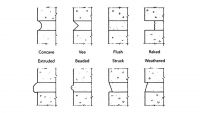March 4, 2011 1:50 PM CST
The scope and detail of MIT's LCA model will set their current efforts apart from previous work. According to MIT professor and research team leader John Ochsendorf, the expanded life-cycle window – 50 years for paving materials and 75 years for building materials – combined with the level of detailed analysis conducted on the use phase of structures and pavements will distinguish MIT's latest research. Initial reports have shown the importance of including the use phase, with MIT researchers finding that more than 90 percent of residential building life-cycle carbon emissions and up to 85 percent of highway pavement emissions occur during this period.
"The life-cycle model we are developing will combine the best data on the full range of costs – construction, maintenance, reconstruction, user, direct, and indirect – with a time frame that reflects the real world life of pavements and building materials," said Ochsendorf.
MIT's ongoing work on measuring the life-cycle carbon emissions of these materials is scheduled to be completed by August 2011. The environmental findings will then be supplemented by economic analyses in 2011 to provide the most accurate assessment of the economic and environmental impacts for buildings and pavements yet produced.
The economic study will produce an equally comprehensive life-cycle cost analysis (LCCA) model. According to Ochsendorf, once both studies are completed, MIT will have "provided the scientific community, industry leaders and policymakers with a framework to determine the economic and environmental life-cycle costs of selected infrastructure materials throughout the real life of projects."
As policymakers and political leaders work to account for the environmental and economic costs of public building and paving projects, this type of comprehensive costing model of key materials may provide a roadmap to those who plan these major initiatives.
MIT Research To Set Life-Cycle Assessment Standard
By Massachusetts Institute of Technology

MIT recently released findings to help set a new standard in life-cycle assessment modeling.
The Massachusetts Institute of Technology (MIT) recently released preliminary research findings that will help set a new standard in life-cycle assessment (LCA) modeling. The studies, which are part of an ongoing research initiative at the MIT Concrete Sustainability Hub, will quantify the cradle-to-grave environmental costs of paving and building materials, and will ultimately result in the most comprehensive LCA model produced to-date.The scope and detail of MIT's LCA model will set their current efforts apart from previous work. According to MIT professor and research team leader John Ochsendorf, the expanded life-cycle window – 50 years for paving materials and 75 years for building materials – combined with the level of detailed analysis conducted on the use phase of structures and pavements will distinguish MIT's latest research. Initial reports have shown the importance of including the use phase, with MIT researchers finding that more than 90 percent of residential building life-cycle carbon emissions and up to 85 percent of highway pavement emissions occur during this period.
"The life-cycle model we are developing will combine the best data on the full range of costs – construction, maintenance, reconstruction, user, direct, and indirect – with a time frame that reflects the real world life of pavements and building materials," said Ochsendorf.
MIT's ongoing work on measuring the life-cycle carbon emissions of these materials is scheduled to be completed by August 2011. The environmental findings will then be supplemented by economic analyses in 2011 to provide the most accurate assessment of the economic and environmental impacts for buildings and pavements yet produced.
The economic study will produce an equally comprehensive life-cycle cost analysis (LCCA) model. According to Ochsendorf, once both studies are completed, MIT will have "provided the scientific community, industry leaders and policymakers with a framework to determine the economic and environmental life-cycle costs of selected infrastructure materials throughout the real life of projects."
As policymakers and political leaders work to account for the environmental and economic costs of public building and paving projects, this type of comprehensive costing model of key materials may provide a roadmap to those who plan these major initiatives.
About the Author
The Massachusetts Institute of Technology is devoted to the advancement of knowledge and education of students in areas that contribute to or prosper in an environment of science and technology. Visit www.mit.edu for more information.


















